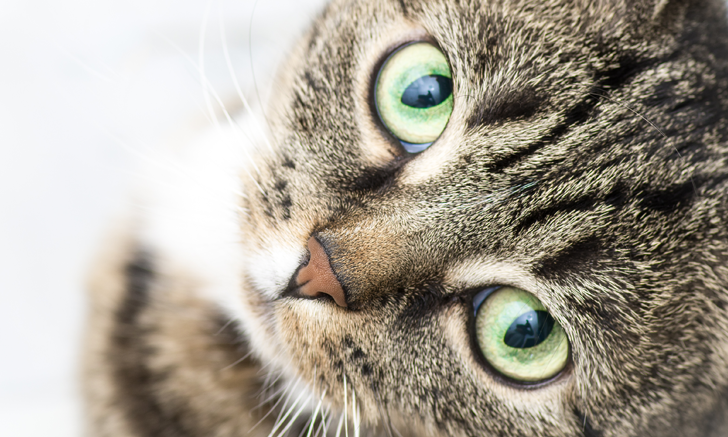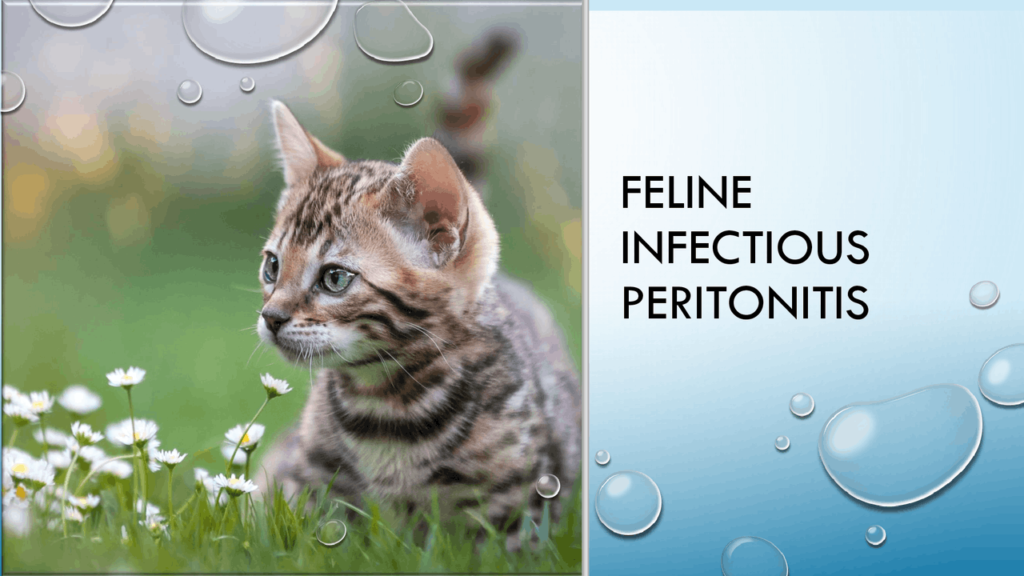Feline Infectious Peritonitis is on the rise in the Philippines and it can be deadly to cats.
Have you heard of Feline Infectious Peritonitis?
If not, then you must read this article. This deadly viral disease is effecting ever more cats in the Philippines. While the disease is treatable, it is extremely difficult to diagnose and few doctors are aware that there is an effective treatment. By reading this article, you may be in the position to save your cat or someone else’s cat one day.
Feline Infectious Peritonitis, commonly known as FIP is a non-contagious viral infection. FIP is the result of a rare mutation from feline coronavirus (FCOV). Feline coronavirus (FCOV) is a benign but common infection transmitted between cats in multi-litter households, at breeds homes, and in the streets where cats gather. Feline coronavirus are transmitted between cats through bodily fluids including saliva, urine and feces. The good news is feline coronavirus only cause mild symptoms of occasional diarrhea. Nor should you fear feline coronavirus. It does not infect humans.
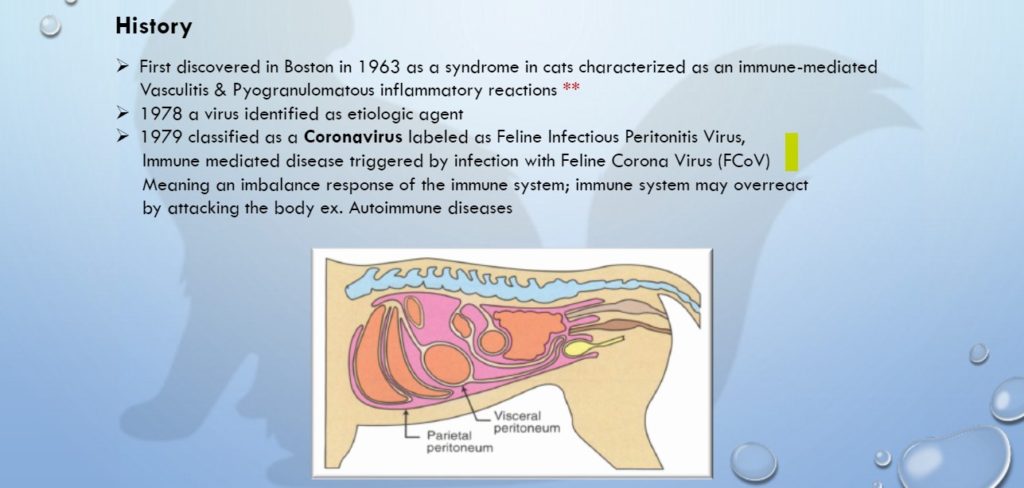
Feline coronavirus becomes deadly when the viruses mutate into feline infectious peritonitis virus.
Mutation tend to occur during periods of sickness or stress, when body’s natural immunity is low. After the initial incubation period, cats may succumb to FIP is as little as 2 weeks.
In the Philippines, this deadly disease has become increasing common in cats, with the mortality rate of greater than 95%. Some of you may have already experienced losing your cat to FIP. Others may soon will. The GOOD NEWS is that there is an effective treatment. But most doctors don’t yet know about it. After reading this article you will learn how to identify early signs of FIP and where to get the treatment that will save your cat’s life.
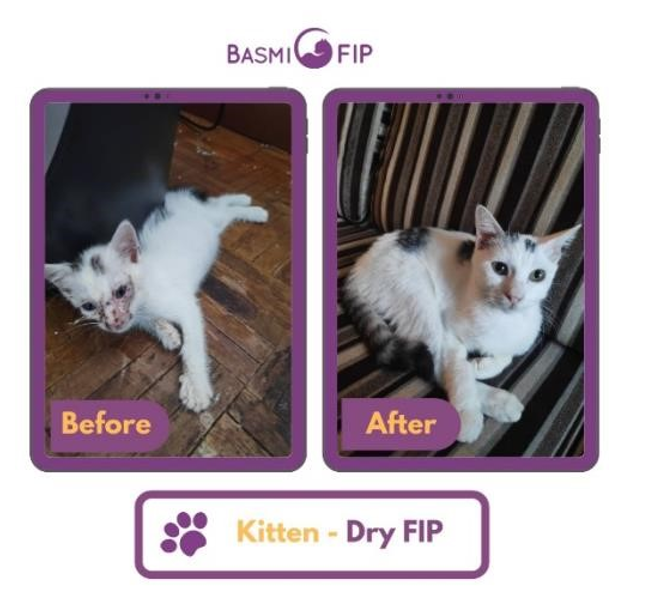
FIP Symptoms
The FIP virus attacks the liver, kidneys, red blood cells, white blood cells, eyes, and even attack the brain and the nervous system. There are 2 types of FIP infection that are equally common in occurrence, but have different symptoms to watch out for.
By far the easier type of FIP infection to diagnose is the wet form. The scientific name is effusive FIP. The wet form of FIP is most commonly observed in kittens. The most visible sign of wet FIP is the enlargement of belly. To untrained eyes, people mistakenly believe that their cats are getting fat. But now you know what it really is…a fatal disease. The enlargement of the belly is from an accumulation of fluid caused by internal organ inflammation. Other associated symptoms include
- Lethargy
- Lack of appetite
- Constant fever
- Difficulty of movement
- Vomiting
- Diarrhea
If you observe these symptoms in your cat, immediately take your cat to get an X-ray and blood test. With these two tests, veterinarians can provide a positive diagnose of FIP with high confidence.
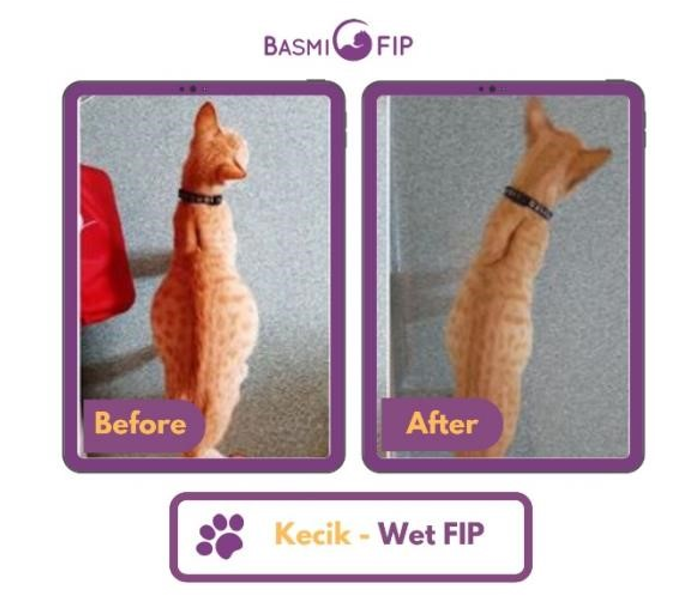
The second form of FIP is the non-effusive FIP, commonly called dry FIP. As opposed to wet FIP, dry FIP does display any outwardly observable symptoms that can alert medical professionals during early stages of infection. Cats may display common symptoms listed above, but no enlarged stomach.
Dry FIP only becomes obvious in the late stages of the infection, when the FIP virus has entered into the nervous system and is attacking brain functions. Symptoms that alert medical professionals to FIP infection include
- Cloudiness in the eyes.
- Partial or complete paralysis
If you observe the above mentioned symptoms in your cat. IMMEDIATELY go to a hospital for medical check-up.
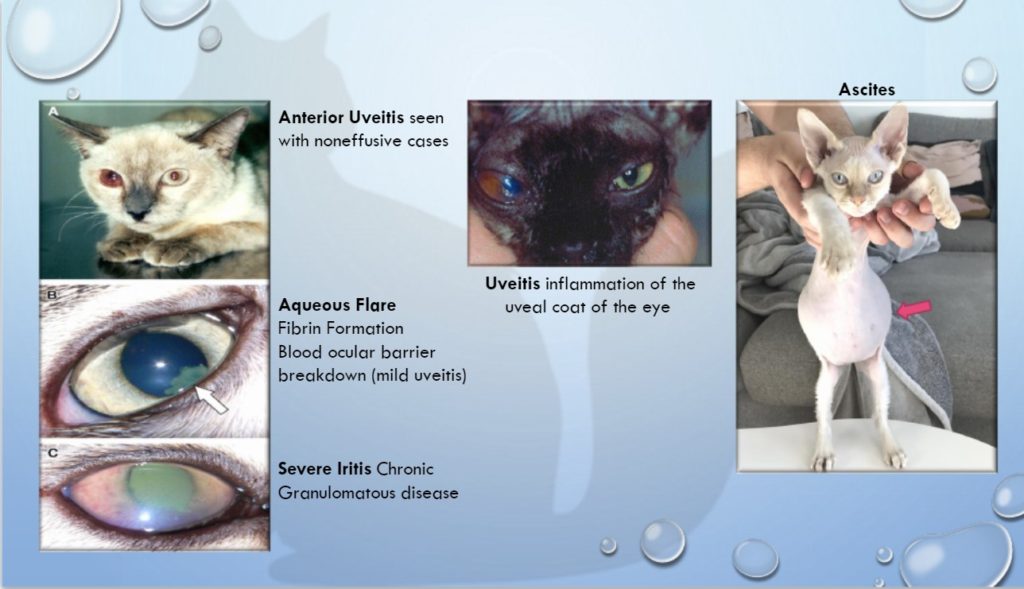
TREATING FIP
Don’t be surprised if your doctor tell you that FIP is untreatable. The BIG NEWS is that little more than 4 years ago a group of researchers in the USA make a breakthrough discovery with a chemical called GS-441524 that demonstrated an astonishing success rate of over 80% in treating both wet and dry form of FIP. In subsequent clinical studies completed in Europe and Asia researchers able to demonstrate similar results. Not every doctors in the Philippines is aware of this new treatment method.
Until recently this breakthrough treatment has been difficult to obtain in the Philippines. However, with the entrance of Basmi FIP™ into the Philippines in 2021, cat owners and veterinarians can now quickly and easily obtain this treatment. Basmi FIP™ was founded in Malaysia in early 2020, dedicated to providing this life saving treatment to cat owners in Southeast Asia. After saving thousands of cats in Malaysia, Thailand, Indonesia and Philippines, Basmi FIP™ has demonstrate an overall clinical success rate of 89%.
If your cat is showing symptoms of FIP, don’t delay in seeking veterinary help. If your veterinarian is not familiar with diagnosing or treating FIP, inform them of Basmi FIP™ (website basmifipph.com).
Please seek the advice of your local vet before giving any treatment to your loved animal.
